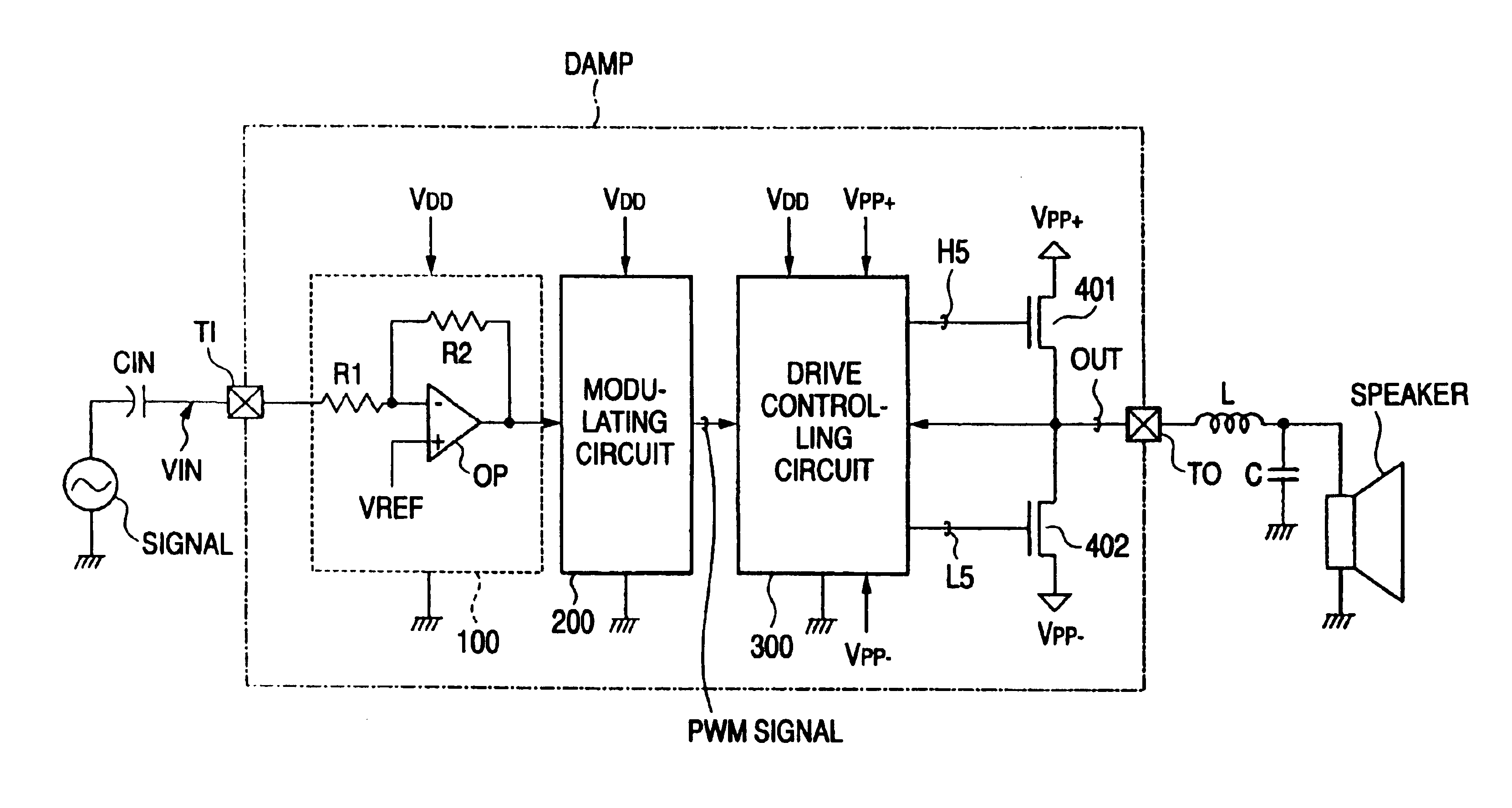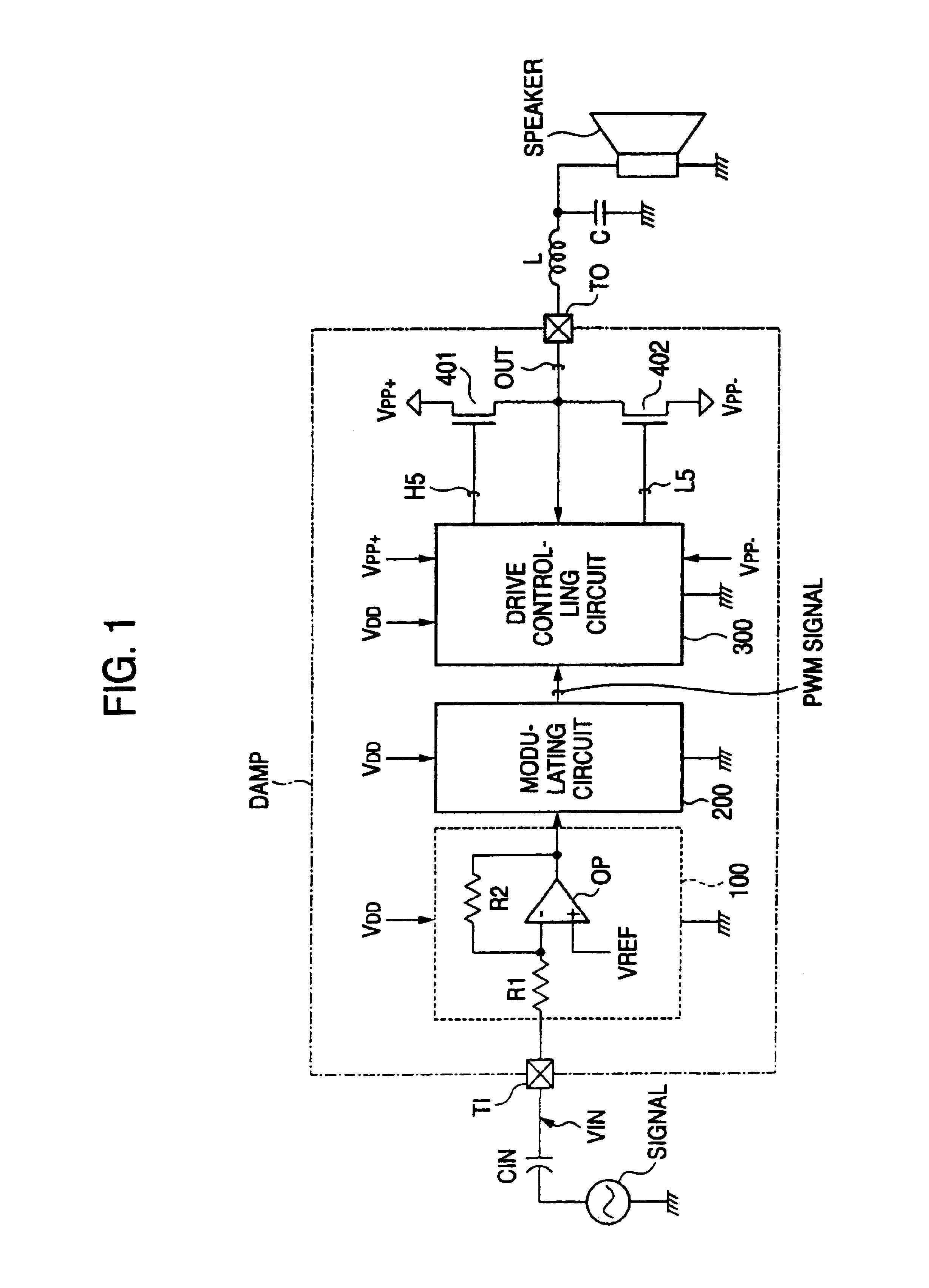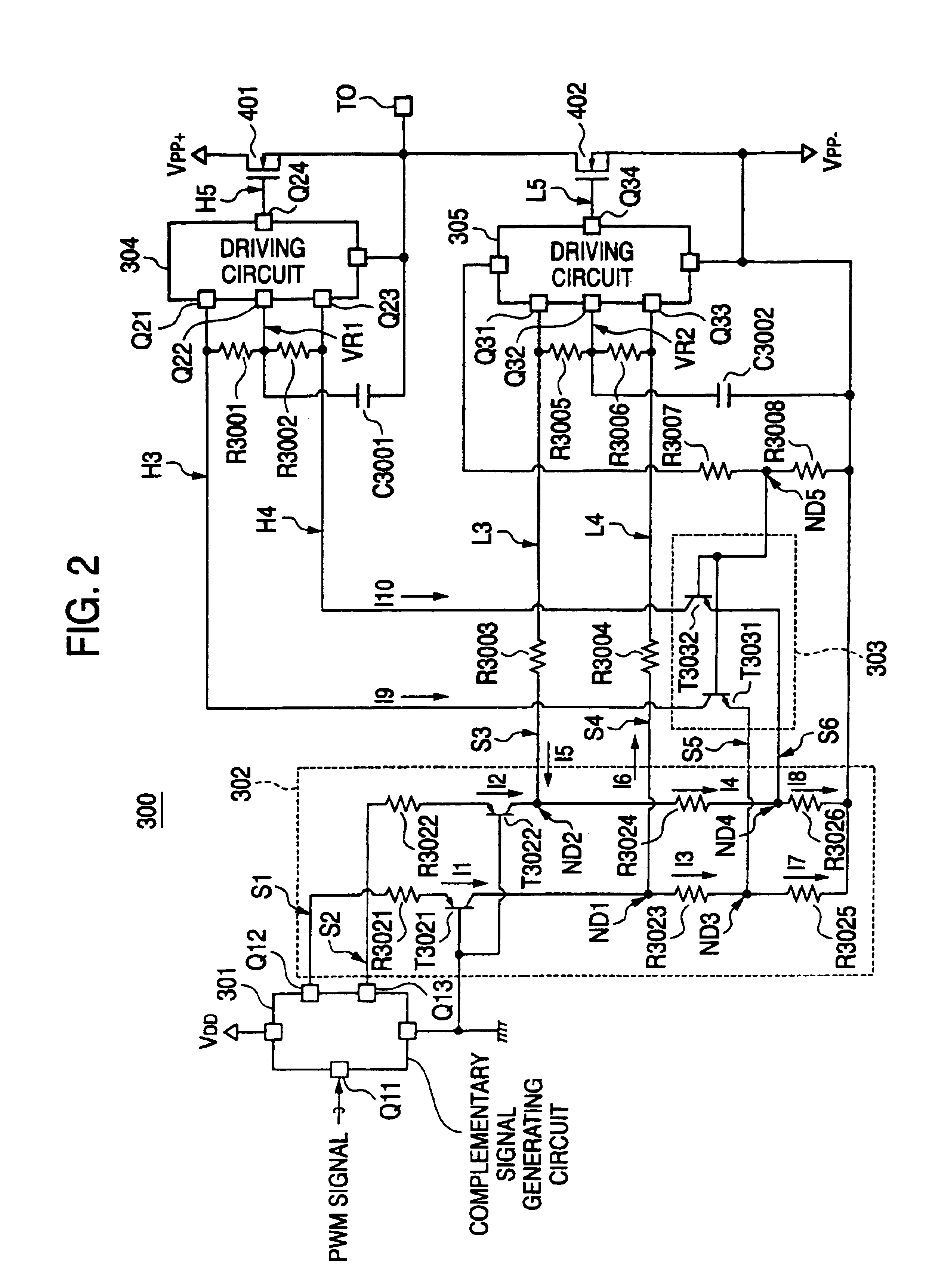Class D amplifier
a class d amplifier and amplifier technology, applied in the direction of amplifiers with semiconductor devices/discharge tubes, pulse techniques, electronic switching, etc., can solve the problems of unstable operation, increased production costs, and signal not being correctly transmitted from the modulating circuit b>902/b> to the drive controlling circuit b>903
- Summary
- Abstract
- Description
- Claims
- Application Information
AI Technical Summary
Benefits of technology
Problems solved by technology
Method used
Image
Examples
Embodiment Construction
[0041]Hereinafter, an embodiment of the invention will be described with reference to the accompanying drawings.
[0042]FIG. 1 shows the configuration of a class D amplifier DAMP according to the embodiment. Referring to the figure, a signal source SIG is a source of a (analog) music signal in which the midpoint of the amplitude is set to the ground potential (0 V). The signal of the signal source SIG is supplied as a music signal VIN to an input terminal TI of the class D amplifier DAMP via an input capacitor CIN. The class D amplifier DAMP is a so-called PWM amplifier, and configured by an input stage 100, a modulating circuit 200, a drive controlling circuit 300, and n-type output power-MOS transistors 401 and 402.
[0043]The input stage 100 is configured by an input resistor R1, a feedback resistor R2(=R1), and an operational amplifier OP. One end of the input resistor RI is connected to the inverting input (−) of the operational amplifier OP, and the other end of the resistor to an...
PUM
 Login to View More
Login to View More Abstract
Description
Claims
Application Information
 Login to View More
Login to View More - R&D
- Intellectual Property
- Life Sciences
- Materials
- Tech Scout
- Unparalleled Data Quality
- Higher Quality Content
- 60% Fewer Hallucinations
Browse by: Latest US Patents, China's latest patents, Technical Efficacy Thesaurus, Application Domain, Technology Topic, Popular Technical Reports.
© 2025 PatSnap. All rights reserved.Legal|Privacy policy|Modern Slavery Act Transparency Statement|Sitemap|About US| Contact US: help@patsnap.com



